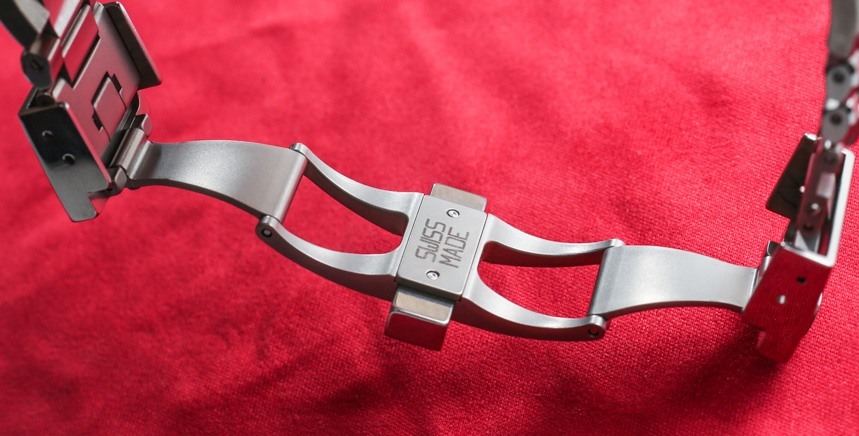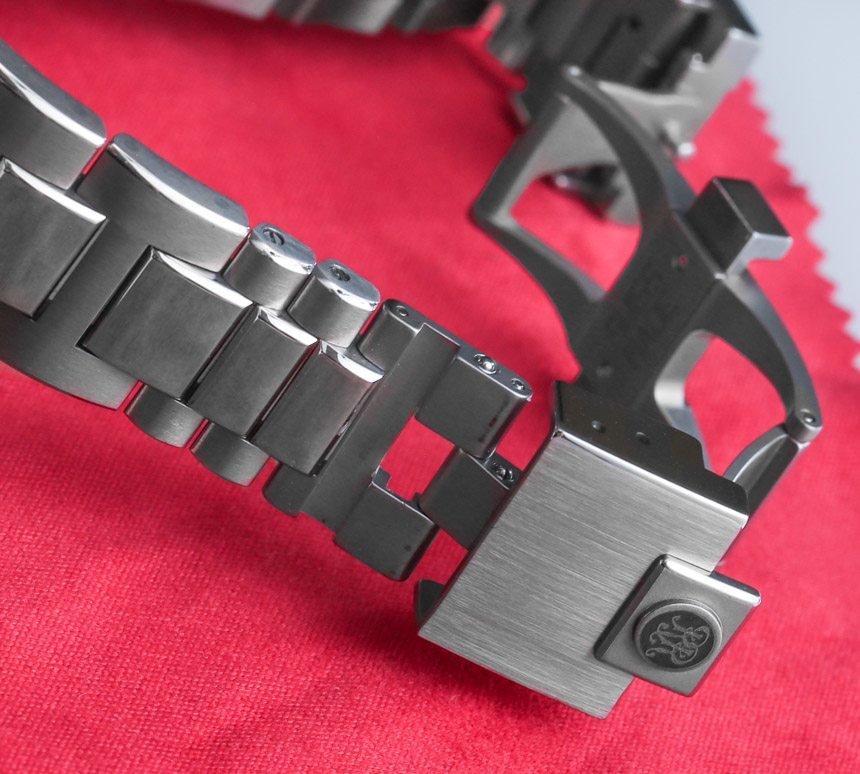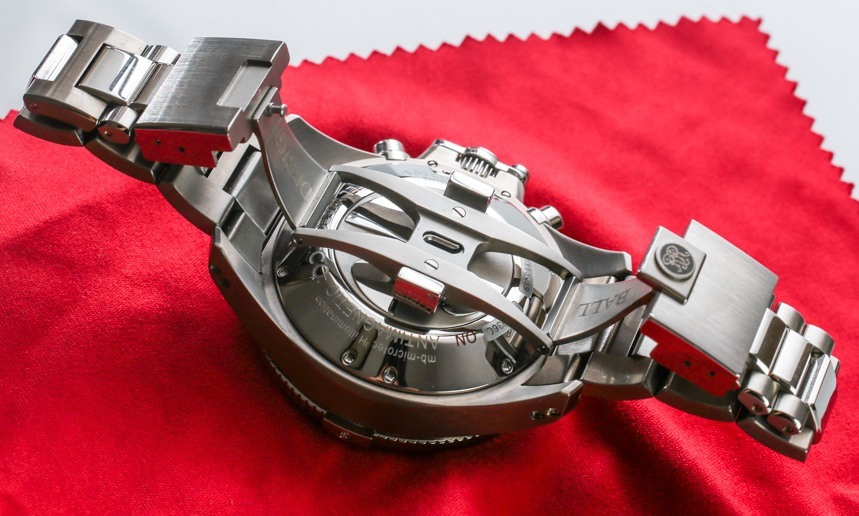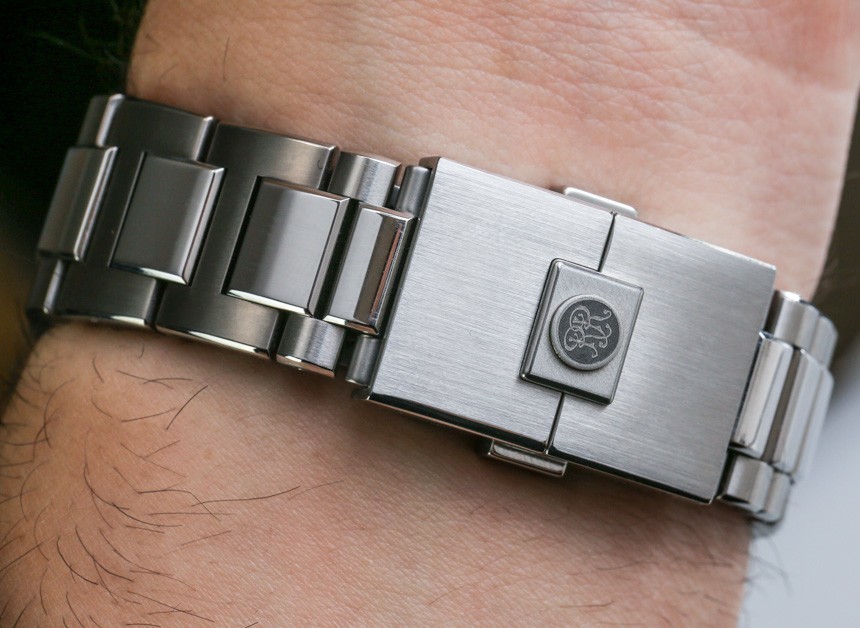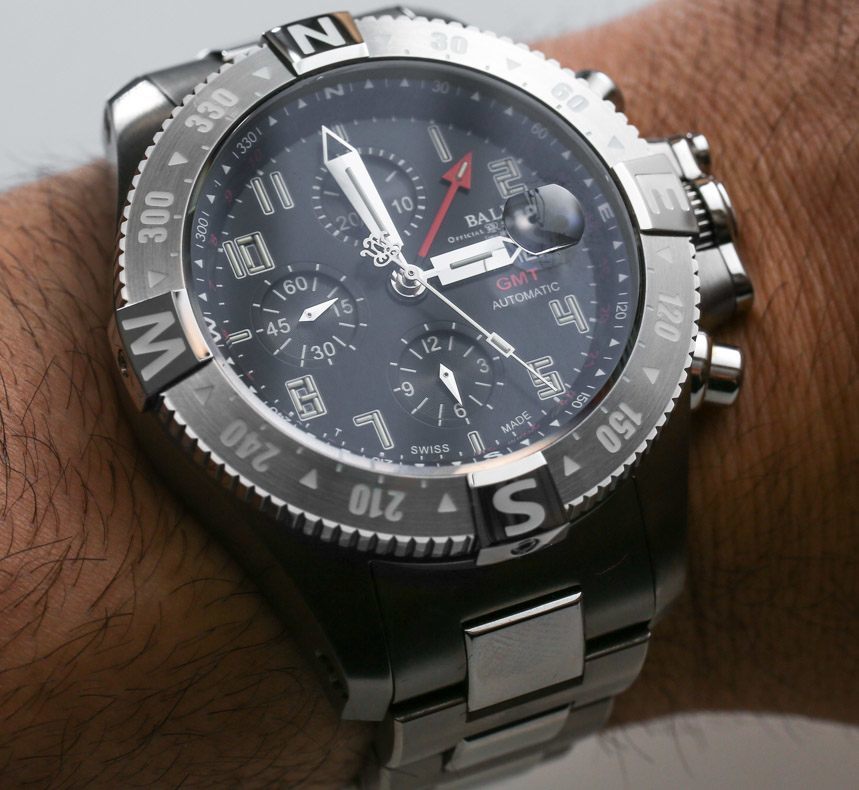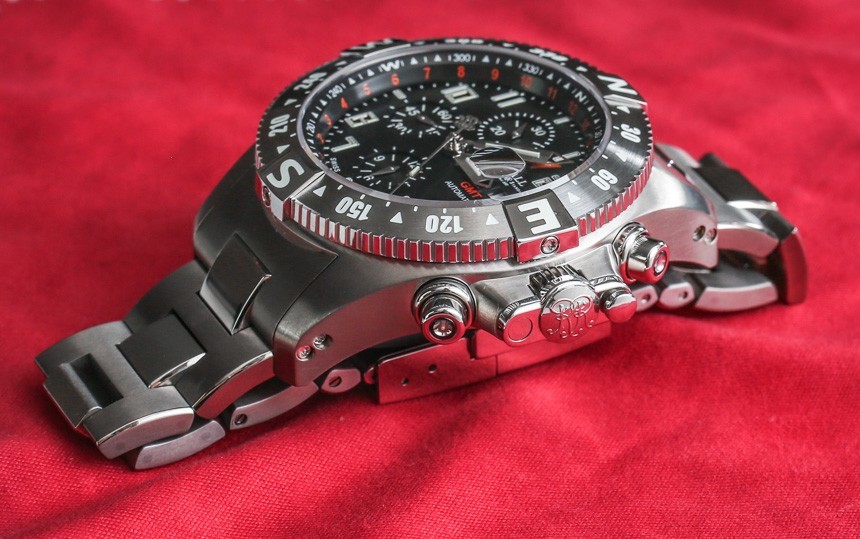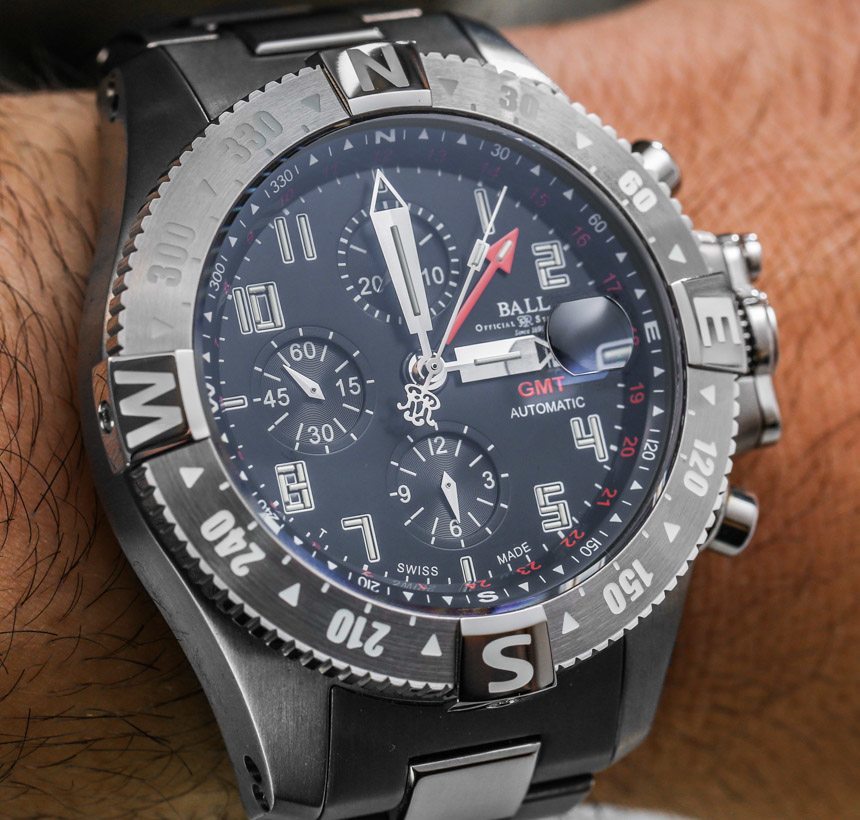
Standing high and wide in a lot of titanium, the Ball Engineer Hydrocarbon Spacemaster Orbital II Chronograph ref. DC3036C-SA-BK watch looks intimidating as you take it out of the box. While it is a traditional Swiss watch through and through, the modern design elements and busy dial don’t lend themselves to a comforting, familiar feel as you place the heavy (for a titanium watch), highly functional sports watch on your wrist. Ball watches are not known for their demure presence or restrained style, with an emphasis on marrying the historic once American brand into the modern age of the luxury sports watch. I am a known fan of Ball watches, but what was it going to be like to wear around this 45mm wide, 18.3mm thick mega-timepiece that contains features I’ll likely never have an opportunity to use? Let’s find out.
This isn’t my first Ball watch rodeo, so I have a fair amount of experience with the brand. We even debuted the Ball Engineer Hydrocarbon Spacemaster Orbital II Chronograph watch here. Even though not all new Ball watches excite me the same way, I am really bullish on the brand because they seek to capitalize on many of the things modern guys like about mechanical watches without taking prices into territories that are reserved for people who order their automobiles with personalized interiors. Ball isn’t about that type of glitz either, even though they do have some more classically-inspired watches in gold. The Ball Engineer Hydrocarbon Spacemaster Orbital II Chronograph is more about sports and performance.
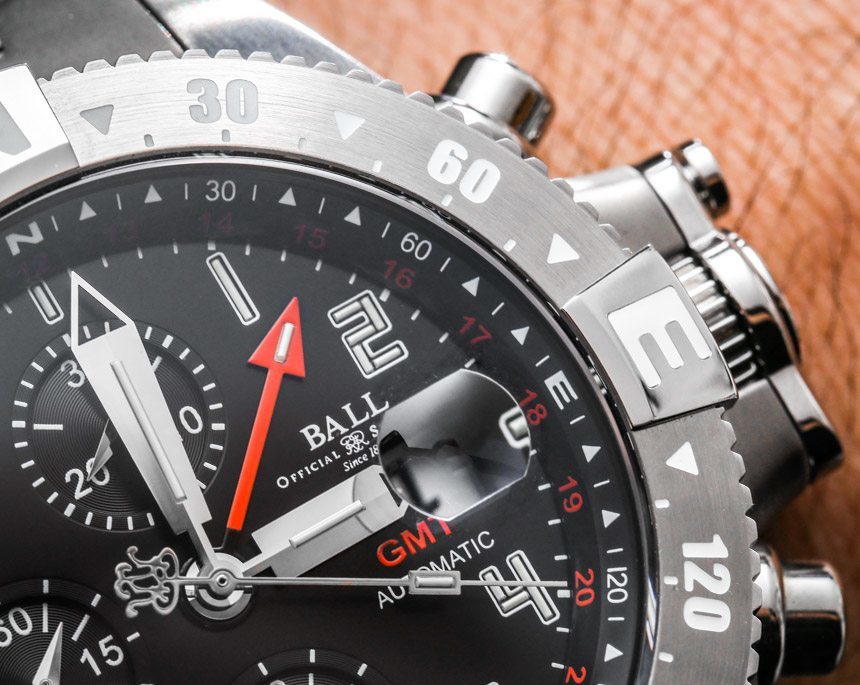
The first major surprise is how well I was able to get the comfortable titanium bracelet to fit. I normally don’t spend a lot of time in a watch review talking about a watch bracelet, but Ball’s bracelets are worth a lot of discussion, as they are really relevant to this review. A bad bracelet would have easily made such a large watch totally unwearable. A good bracelet means you can get a snug fit, which vastly increases the comfort of a larger-sized timepiece. In terms of design, you have a two-link style bracelet with a polished inner link. I like the little bits of polishing on the outer edges of the links as well. It makes for a really good looking yet modern sports watch bracelet.
What makes the Ball Engineer Hydrocarbon Spacemaster Orbital II Chronograph bracelet so comfortable? In addition to being fluid on the wrist, Ball includes not one, but two half links. These are smaller links that allow for a more precise fit – which we generally encourage all brands to offer on their bracelets. Also, if you need a bit of extra room in the bracelet, Ball has designed this style of bracelet with two extensions – one on each end of the butterfly-style deployant. Each gives just a few millimeters of extra space, and when both open, there is enough room to put the watch over a thick jacket sleeve or diver’s suit.
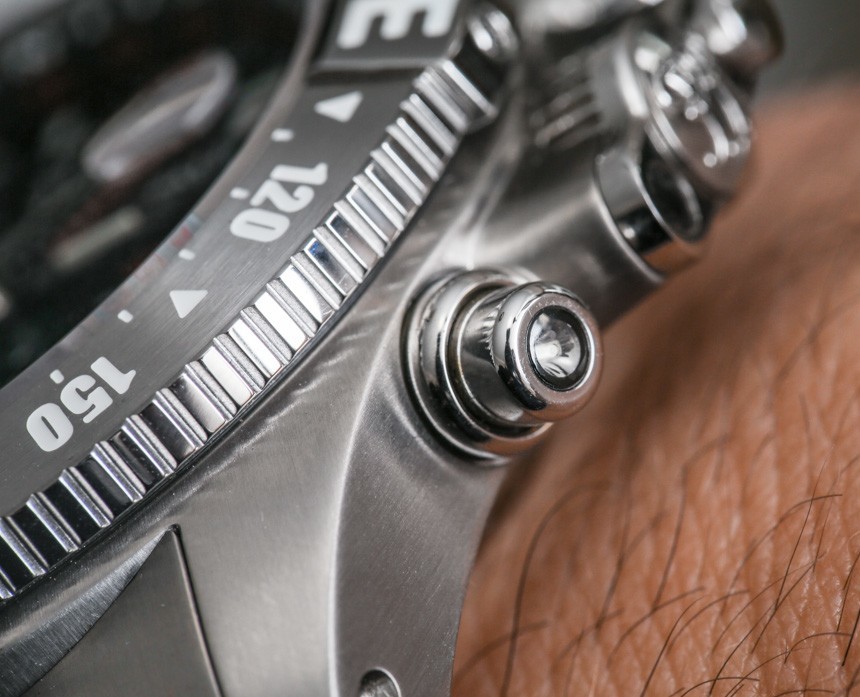
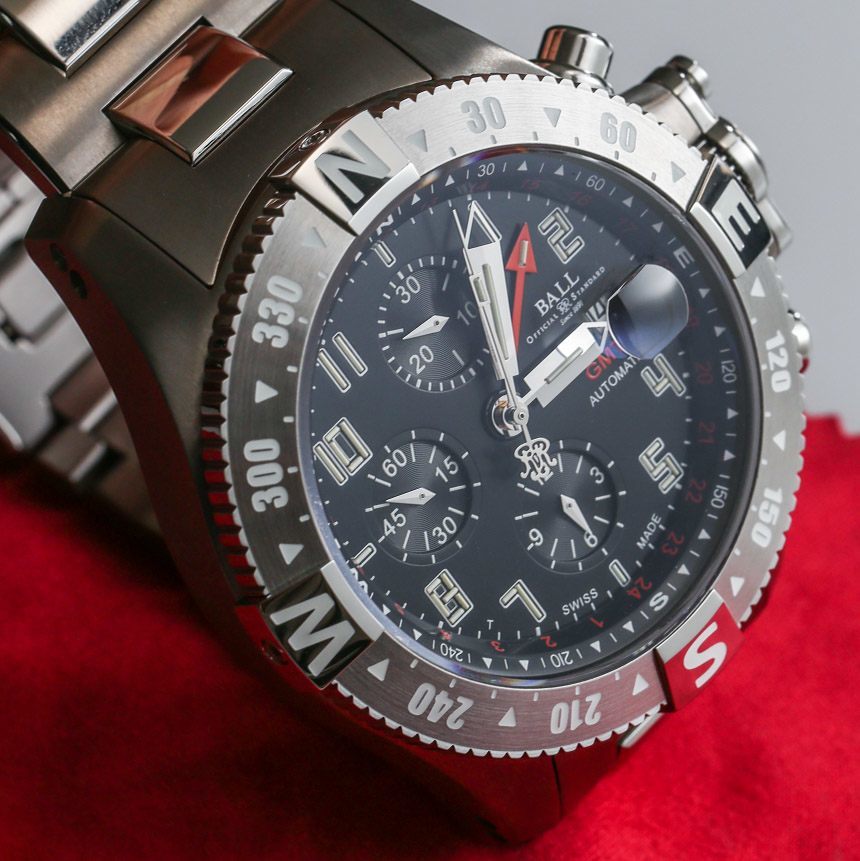
This Ball deployant isn’t new, and I’ve discussed it before. It works very well, with precision made parts unlike most anything else you’ll find at this price level. One issue is that when closed, there is a small section that juts out with the Ball logo. It isn’t that big of a deal, but the thicker underside of the bracelet does make it more prone to being susceptible to scratches. The last thing that I will say about the bracelet is that the links themselves aren’t overly thick. Sometimes, watches of this size feel the need to get really “heavy duty” with their bracelets, but Ball is focused on simple style and a comfortable feel on the wrist.
Given that you can precisely fit the Ball Engineer Hydrocarbon Spacemaster Orbital II Chronograph on the wrist, the size of the case begins to matter a lot less. Being able to snugly wear a watch right around your wrist bone means that it won’t get in the way when you bend your wrist, and you won’t feel it flying around as you move your hand. The worst thing is having a poorly fitting timepiece that ruins the overall experience. So at least for me, that was not an issue here, and I was able to wear this 45mm Ball watch with pure comfort.
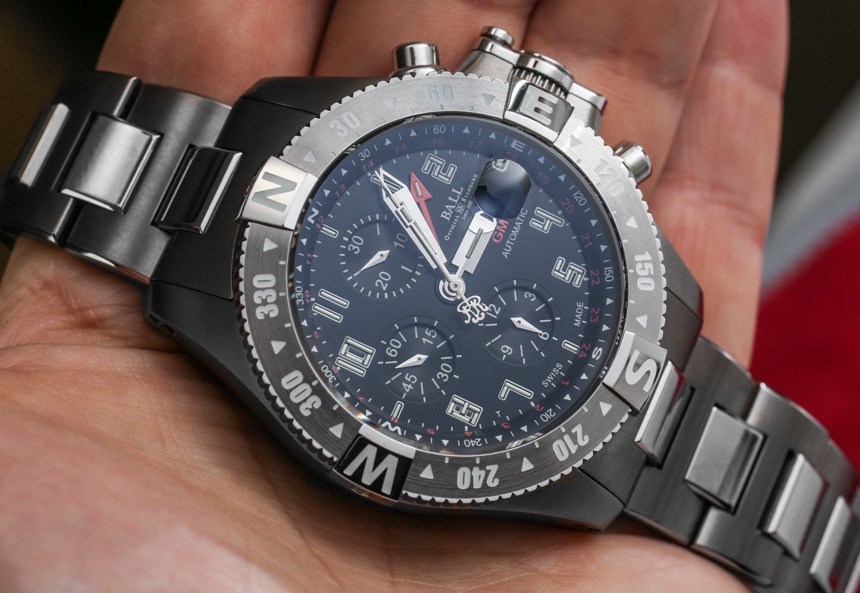
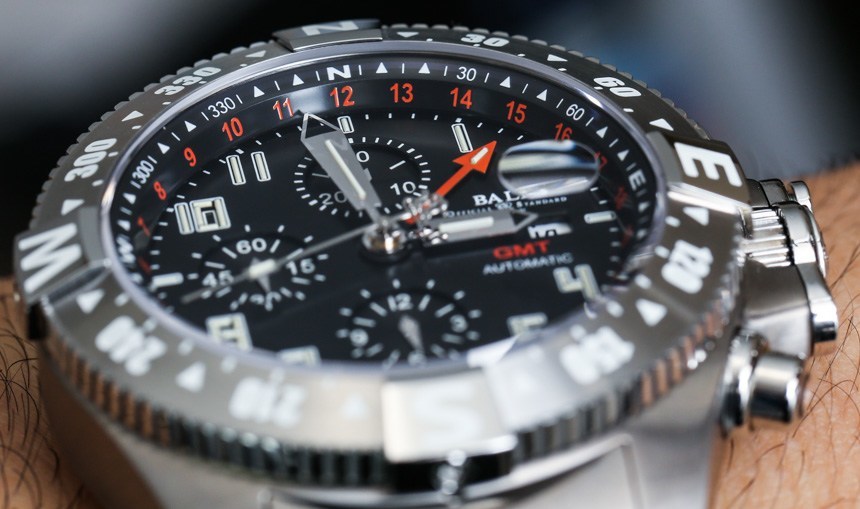
With a good fit, the large dimensions of the Ball Engineer Hydrocarbon Spacemaster Orbital II Chronograph dissipated, and I was able to admire its overall design, functionality, and unique set of features. There is, of course, some flair as well, which I think is welcome in limited amounts on luxury sports watches. A good example is how Ball designed the chronograph pushers on the Ball Engineer Hydrocarbon Spacemaster Orbital II Chronograph. As you might know, Ball is known for being the most high-end brand to regularly feature Swiss made Tritium gas tubes as hour markers and in their hands. These gas tubes self-illuminate for darkness viewing. Ball decided to put a tube inside each of the chronograph pushers behind a small window. Why? Because it was cool to do so.
As a sport watch, the Ball Engineer Hydrocarbon Spacemaster Orbital II Chronograph has a lot of appealing stats. First is the thick AR-coated sapphire crystal over the dial, then you have 100 meters of water resistance, which is good, given that it is a chronograph and with Ball’s Amortiser feature (more on that in a second). The case is shock resistant to 7,500 Gs and anti-magnetic to 4,800 A/M. You also get Ball’s robust crown protection system. Here you have another bit of “flair” as the small pusher-released protection bar lifts, allowing you to unscrew the crown. That “RR” on the crown stands for “railroad,” which is a reference to Ball’s history.
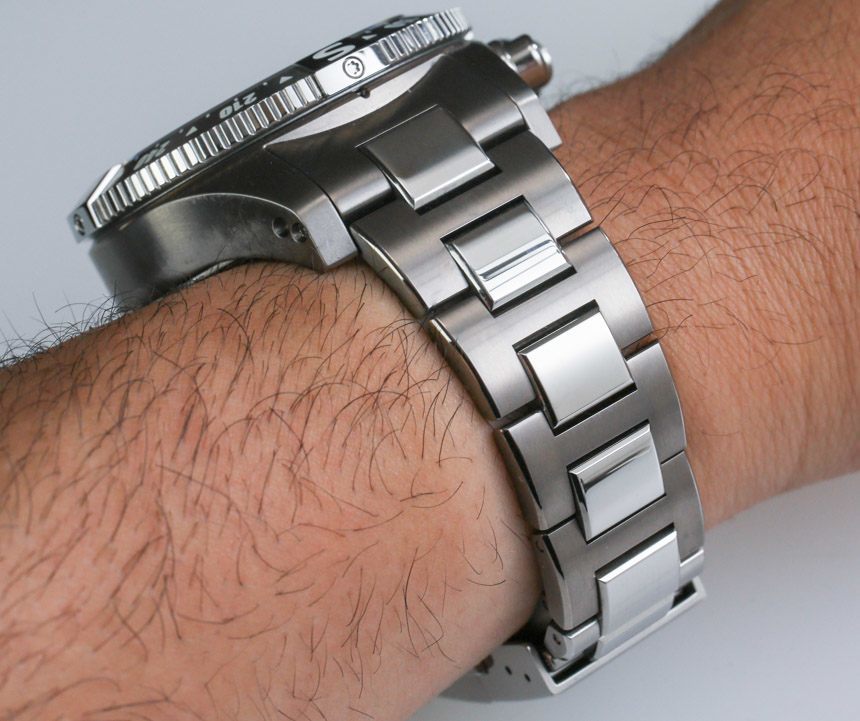
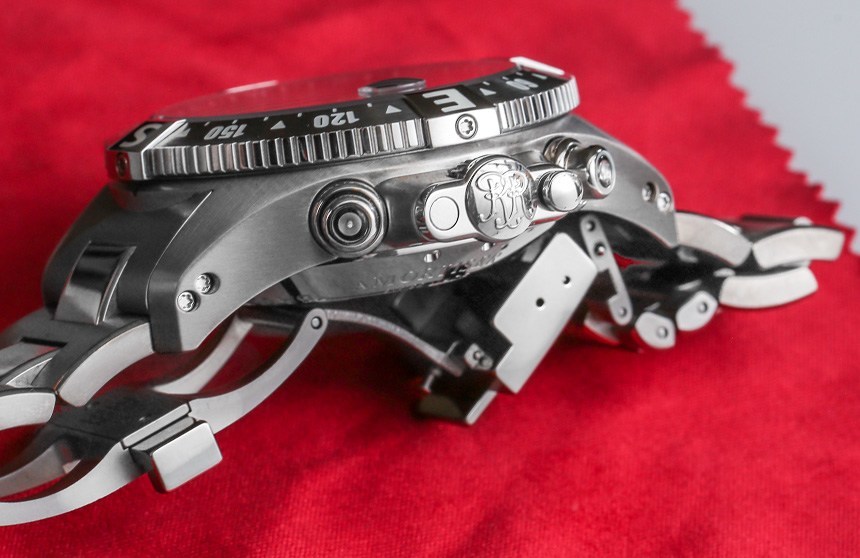
In the video part of this watch review, I discuss how Ball’s Amortiser system works and what it does. The idea is that during certain instances, if you anticipate that your watch will be subject to a lot of shock or vibration, you can manually lock the automatic rotor on the movement from moving. That’s right, you can lock the rotor if you anticipate you are going to be in a “danger zone.” The way this works is pretty simple. You first need to remove the watch and then twist the caseback in the direction indicated with your fingers. The propeller motif in relief on the caseback makes that simple. It is easy to tell when the caseback is in the locked or unlocked position.
With the Ball Amortiser activated, the rotor is locked, and you are ready for horologically dangerous situations. Of course, the irony is that you need to anticipate these situations, and with the Amortiser activated the mechanical movement will not automatically wind. A good feature to have combined with the Ball Amortiser is a power reserve indicator. Ball actually did that with the Ball Engineer Hydrocarbon Hunley watch (hands-on here).
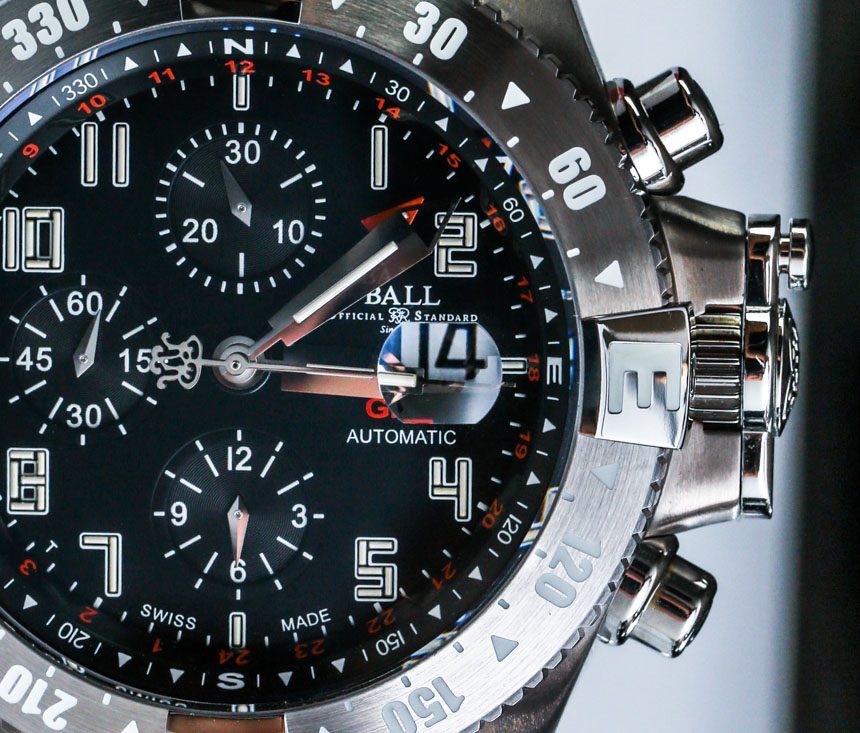
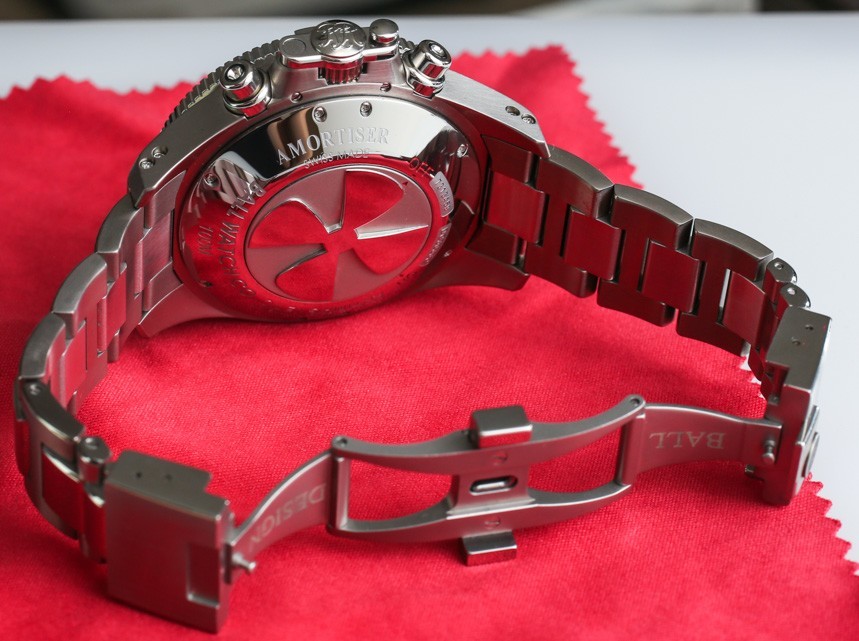
Will you use the Ball Amortiser feature all that much? Probably not. Desk divers love dive watches and don’t dive, and people who wear Ball timepieces or most other luxury sports watches don’t do half the things those timepieces were meant for. Still – we love them, and such features add to the “story” behind why we want these products on our wrists and in our collections. Now, let’s move on to the dial of the Ball Engineer Hydrocarbon Spacemaster Orbital II Chronograph watch.
The Ball Engineer Hydrocarbon Spacemaster Orbital II Chronograph has a dial that is about as busy are your standard Breitling chronograph. That means a lot of markers, but still you manage to read everything. In the dark, the dial is amazing, as Ball uses 39 total Tritium gas tubes in various colors, as well as a traditional SuperLumiNova luminant marker-filled bezel. The “night shot” of the dial is among the most amazing I’ve been able to photograph, and in the dark, it is truly amazingly legible. Little touches like the GMT hand being in a different color help a lot. Unfortunately, Ball was not able to design the dial so that the subsidiary dials have any luminant. This means the chronograph isn’t really useful in total darkness – but for me, that isn’t a deal breaker.
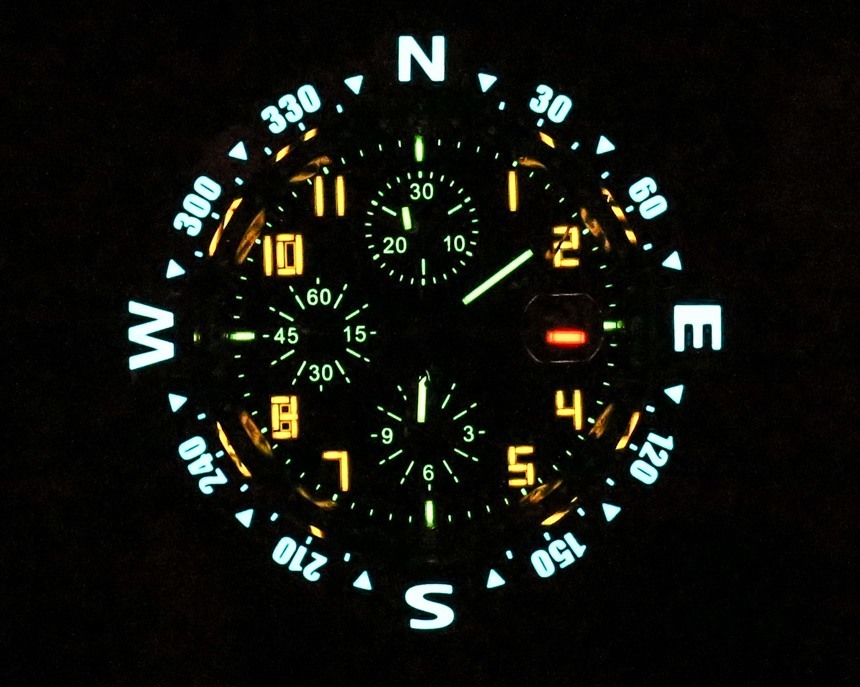

On close inspection, you’ll see that the chronograph subdials are slightly recessed with a concentric circle pattern in them – this is a welcome decorative touch. I also like the small dauphine-style subdial hands. While the dial of the Ball Engineer Hydrocarbon Ball Engineer Hydrocarbon Spacemaster Orbital II Chronograph watch is on the busier side, Ball really didn’t design it with anything unnecessary. While I happen to like it, or at least not be bothered by it, not everyone will like the use of a magnifier crystal over the date window. It does actually help to read the date a lot better, but not everyone likes the protrusion on the sapphire crystal. Around the dial is a bi-directional rotating bezel with compass markers on it. This navigational feature can be used in combination with the GMT hand, which allows you to roughly know the compass directions when used in combination with the position of the sun.
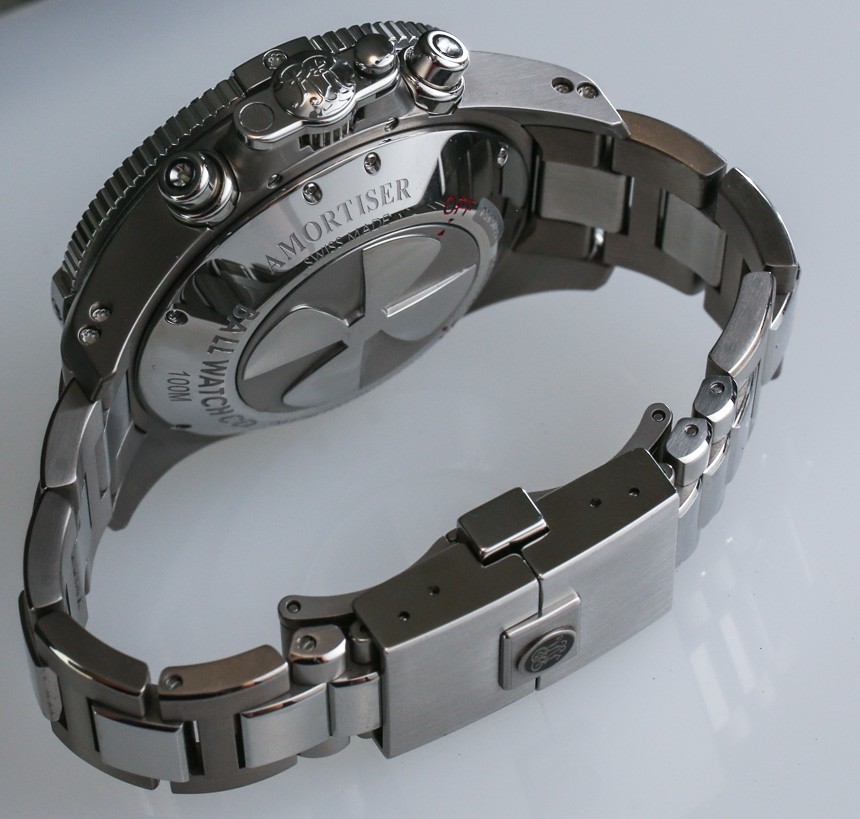
Inside the Ball Engineer Hydrocarbon Spacemaster Orbital II Chronograph watch is their caliber RR1404 automatic movement. It is a Base Swiss ETA or Sellita mechanical chronograph movement with a GMT module added to it which adds a second time zone – though the GMT hand can be used to indicate whether you are in AM or PM time as well. It isn’t the most unique movement in the world, but you aren’t paying the price you might for the most unique movement in the world. It gets the job done nicely and Ball adds some nice touches to it.
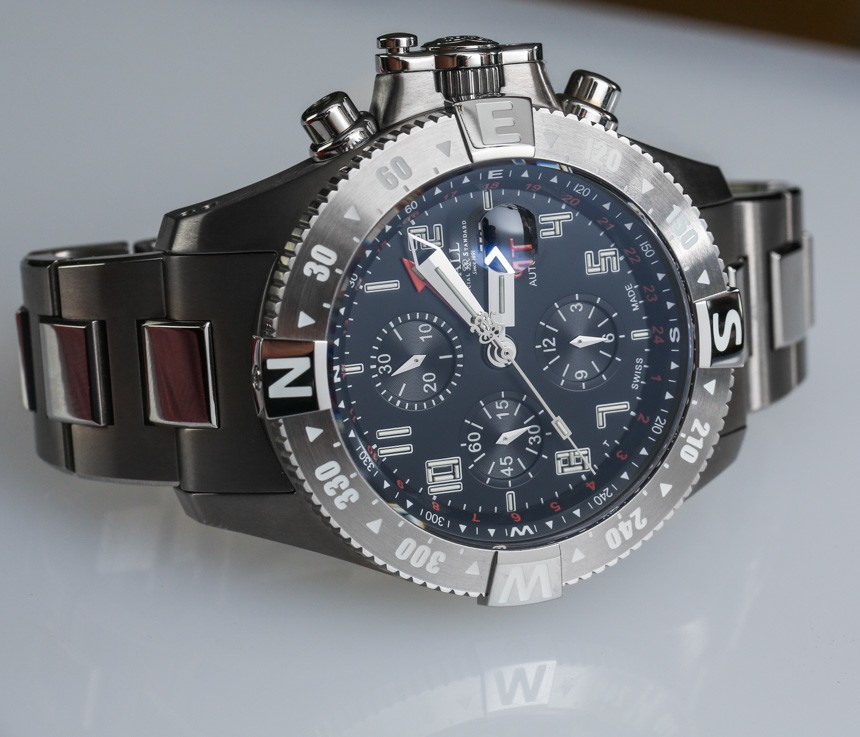
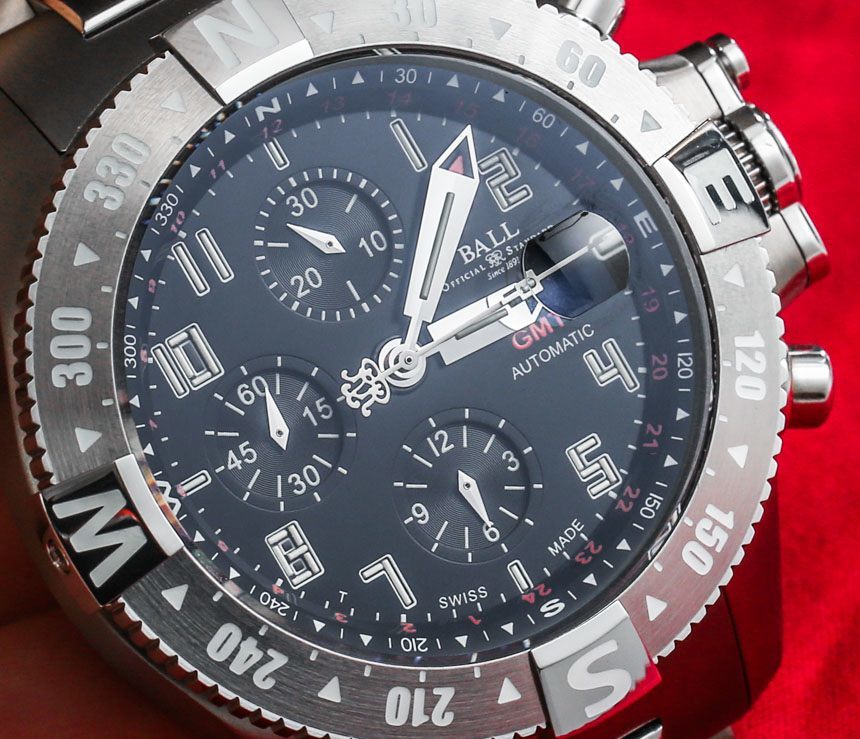
Any immediate skepticism about the Ball Engineer Hydrocarbon Spacemaster Orbital II Chronograph I had before wearing it melted away after enjoying time with the watch on my wrist – this really turned out to be my type of timepieces. In titanium, the 45mm wide case wasn’t too heavy, and honestly, you’d never know it was titanium by looking at it, given the excellent finishing. The dial proves both functional and legible, and the overall design is exactly what I like in a modern sports watch: traditional without being retro stale, and visually contemporary. Of course, there is no one Ball watch with all the best features. The Ball Engineer Hydrocarbon Spacemaster Orbital II Chronograph doesn’t have Ball’s SpringLOCK feature – which admittedly would be a bit redundant with the Amortiser. Sadly, if you love Ball timepieces, no one watch will satisfy you – so get ready for some collecting…
Price-wise, the Ball Engineer Hydrocarbon Spacemaster Orbital II Chronograph isn’t cheap in the scheme of things most people buy on a regular basis, but it is very well-priced for what you get in terms of both features and quality. Ball has never tried to be a watch brand you are buying because of the name, but rather because you associate a certain look and feature set with the name. Ball watches, for the most part, make suitable daily wears, and their focus on things like functionality and ergonomics can only be truly appreciated when checking some of the competition. Of course, with their prolific designs, you never know what will come next, but for now, if you are looking for a feature-packed sporty chronograph, the Ball Engineer Hydrocarbon Spacemaster Orbital II Chronograph ref. DC3036C-SA-BK is a solid choice. Price is $5,999. ballwatch.com
Necessary Data
>Brand: Ball
>Model: Hydrocarbon Engineer Spacemaster Orbital II Chronograph reference DC3036C-SA-BK
>Price: $5,999
>Size: 45mm
>Would reviewer personally wear it: Yes
>Friend we’d recommend it to first: Non-brand snobs looking for an absolutely modern, well-conceived Swiss mechanical sports watch with some character.
>Best characteristic of watch: Series of features and design elements work well together in a functional, comfortable, well-priced package.
>Worst characteristic of watch: No luminant on chronograph subdial hands. Deployant clasp is thick.

